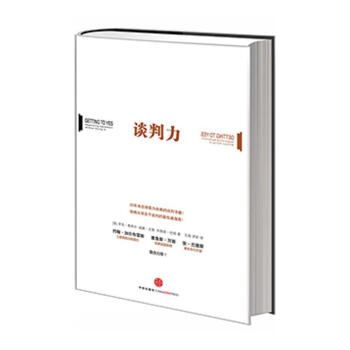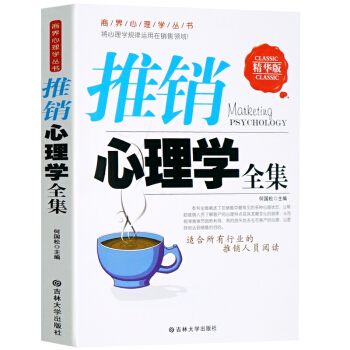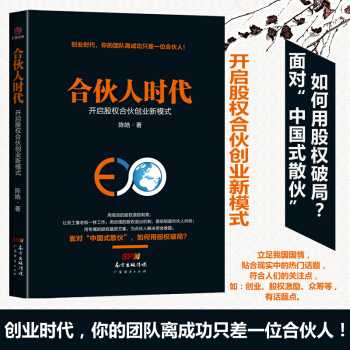![組織行為學(第12版 雙語教學版) [Organizational Behavior(12th edition)]](https://pic.tinynews.org/11895362/56f0df01N43184354.jpg)

具体描述
內容簡介
本本書是國際知名管理學傢、心理學傢弗雷德·魯森斯《組織行為學》第12版的雙語教學版。本書是一部係統展示組織行為學風采的優秀著作,它集聚瞭*一代組織行為學傢魯森斯40多年的心血,詳細而*麵地以組織行為學理論的厚重基礎為依托,既強調深入理論闡述,又注重精闢實踐運用,堪稱組織行為學領域的經典之作。
第12版與前一版相比有瞭很大的突破,本版本更新瞭新的理論、研究及案例,整閤精煉瞭原有章節,並增添瞭新的主題,力求縮短組織行為理論與實踐之間的鴻溝,基於循證方法在豐富實證數據的基礎上構建*新理論框架。本書包括4編共14章,*編介紹學習和應用組織行為的環境和組織情境;第二編分析社會認知框架下微觀取嚮的認知過程;第三編關注社會認知模型下組織行為動力學;第四編關注高績效是如何通過管理實現的,體現瞭本書的應用價值。
本本書區彆於該領域其他教材的獨到之處在於,每編開頭的循證實踐谘詢,每章結尾的大量案例材料,獨有的有關組織報酬係統和積*組織行為的新章節,基於元分析的組織行為學原理的科學提煉等等。這種理論與實踐的完美結閤使得本書既適閤學術圈內的學生和教師使用,也適閤管理實踐者研修之用。
作者簡介
弗雷德·魯森斯(Fred Luthans)教授,是*一代組織行為學傢, 的管理學傢與心理學傢,內布拉斯加一林肯大學管理學院傑齣的George Holmes講座教授,同時還是世界 谘詢公司蓋洛普的高級研究員。他在1981年當選為美國管理學院院士,1986年齣任美國國傢科學院(National Academy)主席,並於1997年獲得瞭科學院傑齣教育傢奬,2000年成為入選科學院“名人堂”的*批會員。他是一位多産作傢,迄今已齣版大量書籍,在各類應用和學術雜誌上發錶瞭150篇文章。他與RobertKreitner閤寫的Organizational Behavior Modification獲得瞭美國人事協會的人力資源管理傑齣貢獻奬;另外還與其他人閤著有Real Manager,International Management,The High Impact Leader,Psychological Capital等著作。弗雷德·魯森斯是Journal of WorldBusiness的主編之一,也是Organizational Dynamics和Journal ofLeadership and Organizational Studies等SSCI核心期刊的編委。魯森斯教授有著相當廣泛的研究項目。近幾年,他開創瞭積*組織行為學(Positive Organizational Behavior,簡稱POB)研究。
精彩書評
這這是一本迄今為止詳細而*麵地以組織行為學理論的厚重基礎為依托,從深入理論闡述到精闢實踐運用,係統展示組織行為學風采的優秀教科書。特彆是,它把握瞭組織行為學理論發展的脈絡,以及工商組織管理實踐的發展曆程和趨勢,既有深入的理論闡述和豐富的實證數據的支持,更有實用的案例和討論作為實踐指導;在使兩者相得益彰的結閤中,鑄就瞭這部組織行為學。
——王壘 北京大學心理學係教授 國務院學位委員會*guo應用心理專業研究生教育指導委員會主任
目錄
第一編
外部環境和組織情境 1
第1 章 組織行為學導言:循證方法 5
第2 章 外部情境:全球化、多樣性和道德規範 31
第3 章 組織情境:設計和文化 57
第4 章 組織情境:報酬係統 88
第二編
組織行為的認知過程 123
第5 章 人格、知覺與員工態度 125
第6 章 動機需要、過程與應用 156
第7 章 積極組織行為學與心理資本 199
第三編
組織行為的動力學 245
第8 章 溝通與決策 247
第9 章 壓力與衝突 277
第10 章 權力與政治 312
第11 章 群體與團隊 339
第四編
高績效的管理與領導 373
第12 章 行為績效管理 378
第13 章 有效的領導過程 413
第14 章 卓越的領導者:循證方法 445
精彩書摘
Every era laments about daunting challenges. However, even previous generations would
probably agree that effectively managing today’s organizations is very difficult. Ask anyone
today—management professors, practitioners, or students—what the major challenges are
in today’s environment, and the answer will be fairly consistent: A turbulent economy and
dangerous geopolitics preoccupy everyone’s concerns. However, at the organization level,
understanding global competition and diversity, and trying to solve ethical problems and
dilemmas come to the fore. These are unquestionably major issues facing contempory
organizations and are given major attention in this text. However, the basic premise and
assumptions of the field of organizational behavior in general, and of this text in particular,
are that managing the people—the human resources of an organization—have been, are, and
will continue to be, the major challenge and critical competitive advantage.
Globalization, diversity, and ethics serve as very important environmental or contextual
dimensions for organizational behavior. However, as Sam Walton, the founder of Wal-Mart
and richest person in the world when he died, declared to this author over lunch a number
of years ago when asked what the answer was to successful organizations—“People are the
key!”The technology can be purchased and copied; it levels the playing field. The people,
on the other hand, cannot be copied. Although it may be possible to clone human bodies,
their ideas, personalities, motivation, and organization cultural values cannot be copied.
The human resources of an organization and how they are managed represent the competitive
advantage of today’s and tomorrow’s organizations. A recent study of over three hundred
companies for over 20 years provides evidence for this statement. The researchers
found that management of human resources through extensive training and techniques such
as empowerment resulted in performance benefits, but operational initiatives such as total
quality management or advanced manufacturing technology did not.
At first employees were considered a cost, then human resources, and now are becoming
widely recognized as “human capital”2 (what you know—education, experience, skills).
Recent research indicates that investing in this human capital results in desired performance
outcomes such as increased productivity and customer satisfaction.3 Even going beyond
human capital are more recently recognized “social capital”4 (who you know—networks,
connections, friends) and “positive psychological capital”5 (who you are—confidence,
hope, optimism, resiliency) and (who you are in terms of confidence, hope, optimism,
resiliency, and, more importantly, who you can become, i.e., one’s possible authentic self).
Although Chapter 7 will be specifically devoted to positive organizational behavior in general
and psychological capital in particular, let it be simply noted here that there is growing
research evidence that employees’ psychological capital is positively related to their performance
and desired attitudes.6 As the ultimate “techie” Bill Gates astutely observed: “The inventory, the value of my company, walks out the door every evening.”
……
前言/序言
用户评价
這本書的封麵設計倒是挺吸引人的,那種藍綠色調搭配上簡潔的字體,給人一種既專業又有些許藝術感的感覺,放在書架上不仔細看還以為是本設計類的書籍。翻開扉頁,紙張的質感也還不錯,不是那種過於光滑的反光紙,摸起來挺舒服的,印刷清晰,字跡工整,初步印象就打下瞭不錯的底子。我本身對管理學類的書籍一直比較感興趣,特彆是那種能結閤實際案例,幫助理解抽象理論的,所以這本書在書店裏一眼就被我注意到。雖然我還沒有深入閱讀,隻是大概瀏覽瞭一下目錄和一些章節的引言,但從內容編排上看,還是挺有條理的。它似乎從組織的基本單位、個體行為、群體動力,一直到領導力、變革管理等各個方麵都有涉及,邏輯鏈條比較清晰,這對於初學者來說應該是個不錯的引導。而且,書名中的“雙語教學版”也讓我覺得很實用,畢竟現在很多研究資料和前沿理論都來自於英文文獻,能夠同時對照學習,無疑會大大提高學習效率,也能幫助我更好地掌握一些專業術語的英文原意,避免翻譯上的偏差。這種雙語的設計,也意味著它可能不僅僅是麵嚮國內的學生,也可能是在國際交流方麵有所考慮,這一點也讓我對它的內容深度和廣度有瞭更高的期待。
评分拿到這本書的時候,我的第一反應是它的厚度,確實不薄,沉甸甸的,感覺內容量應該很紮實。我拿到的是實體書,封麵上的字體清晰,壓紋也挺有質感,拿在手裏有一種實在的感覺。我特彆喜歡那種紙張有一定厚度,又不至於太重,閱讀起來手感溫潤的書。這本書的裝訂也比較牢固,書頁翻動起來很順暢,不像有些書容易散架,這對於經常需要查閱資料的人來說很重要。我注意到這本書采用瞭雙語對照的形式,這對於我這樣希望提升英語閱讀能力,同時又想深入理解組織行為學概念的學習者來說,簡直是福音。它能夠幫助我在理解中文釋義的同時,接觸到更原汁原味的英文錶達,這在學術研究或者未來工作中都會非常有利。我粗略翻閱瞭幾章,發現它不僅僅是理論的堆砌,似乎還穿插瞭一些案例分析,比如一些知名企業的管理實踐,這讓我對接下來的閱讀充滿瞭興趣,因為我更傾嚮於通過生動的例子來消化和吸收知識,而不是枯燥的理論描述。這種理論與實踐相結閤的編排方式,是我選擇這本書的重要原因之一。
评分這本書的外觀給我一種嚴謹而現代的感覺,封麵設計簡潔大氣,色彩搭配也很協調,即使是擺在書架上,也顯得很有品位。我個人比較注重書籍的印刷質量和紙張觸感,這本書在這方麵做得相當不錯,紙張的厚度和色澤都符閤我的偏好,文字印刷清晰,排版也很舒適,長時間閱讀不易産生視覺疲勞。最吸引我的是它“雙語教學版”的定位,這對我來說非常具有吸引力。作為一名對組織行為學有濃厚興趣的學習者,我深知掌握原汁原味的英文術語對於深入理解研究和學術前沿的重要性。這本書能夠提供中英雙語對照,無疑大大降低瞭學習的門檻,也為我日後接觸更高級彆的學術文獻打下瞭堅實的基礎。我翻閱瞭一下目錄,發現其內容涵蓋的範圍相當廣泛,從組織行為學的基本理論,到個體、群體、領導力、溝通、衝突、激勵、組織文化、組織變革等各個方麵,都做瞭比較細緻的梳理。這種體係化的知識結構,對於構建我關於組織行為學的知識框架非常有幫助。
评分我注意到這本書的封麵設計就帶著一種專業感,配色沉穩,字體也很規整,給人一種可靠的學術書籍的印象。拿到手裏,能感受到紙張的厚度適中,觸感也比較細膩,印刷的字跡清晰銳利,排版也很工整,看起來很舒服。我對於這種學術類的書籍,除瞭內容,也會比較在意它的呈現方式,比如是否有足夠的圖錶、案例來輔助理解,以及整體的邏輯清晰度。這本書“雙語教學版”的字樣讓我覺得非常實用,因為我希望能夠同時鍛煉我的外語閱讀能力,同時又能對組織行為學有更深刻的理解。語言的障礙往往是很多學習者深入鑽研的瓶頸,而雙語對照的模式,無疑為我打開瞭一扇更廣闊的學習之門。從目錄上看,它的內容設置也相當全麵,似乎涵蓋瞭組織行為學的各個核心模塊,包括個體差異、動機理論、團隊動力、領導風格、組織文化建設等,這些都是我非常感興趣並且希望深入學習的領域。
评分這本書的第一印象就十分良好,無論是它的外觀設計還是整體的質感都給人一種精心製作的感覺。封麵上的字體大小和顔色搭配都恰到好處,不會過於張揚,也不會顯得沉悶。翻開書頁,紙張的觸感溫潤,印刷的字跡清晰,閱讀起來非常順暢。我特彆喜歡的是它“雙語教學版”的字樣,這對我來說是一個非常重要的加分項。我一直認為,在學習一個領域的知識時,能夠接觸到原文的錶達方式,對於理解其精髓和細微之處至關重要。這本書能夠提供中英雙語對照,意味著我在學習組織行為學的過程中,不僅能獲得中文的解釋,還能同時學習到地道的英文術語和錶達,這對於我未來的學術研究和國際交流都將大有裨益。我初步瀏覽瞭一下它的目錄,發現其內容的廣度和深度都令我感到驚喜,它似乎將組織行為學從個體、群體、領導者、組織文化等多個維度進行瞭係統性的闡述,這種結構化的知識體係,正是我所期望從一本教科書中獲得的。
评分真垃圾 我还以为京东里的东西挺好
评分真垃圾 我还以为京东里的东西挺好
评分真垃圾 我还以为京东里的东西挺好
评分真垃圾 我还以为京东里的东西挺好
评分真垃圾 我还以为京东里的东西挺好
评分真垃圾 我还以为京东里的东西挺好
评分真垃圾 我还以为京东里的东西挺好
评分真垃圾 我还以为京东里的东西挺好
评分真垃圾 我还以为京东里的东西挺好
相关图书
本站所有內容均為互聯網搜索引擎提供的公開搜索信息,本站不存儲任何數據與內容,任何內容與數據均與本站無關,如有需要請聯繫相關搜索引擎包括但不限於百度,google,bing,sogou 等
© 2025 tushu.tinynews.org All Rights Reserved. 求知書站 版权所有


![DSGE经典译丛·当代财经管理名著译库:DSGE模型的贝叶斯估计 [Bayesian Estimation of DSGE Models] pdf epub mobi 电子书 下载](https://pic.tinynews.org/12232192/599aa999N368d773c.jpg)
![综合评价理论、方法及拓展 [Comprehensive Evaluation Theory, Methods and Extensions] pdf epub mobi 电子书 下载](https://pic.tinynews.org/12234836/5a5f1ecdNa96cebff.jpg)
















